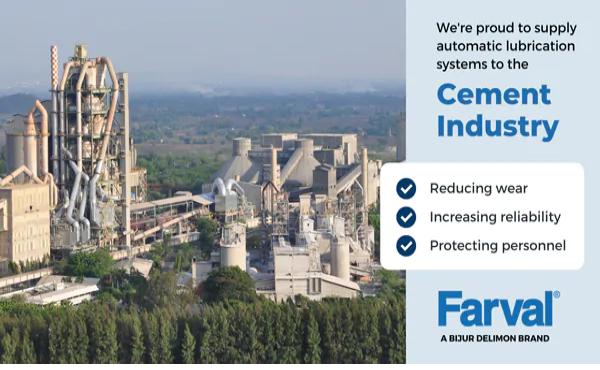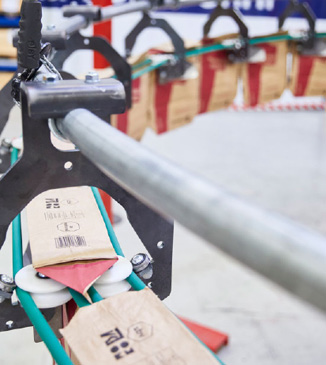Martine Engineering helped mitigate dust emissions at the underground limestone mine of a cement production plant by implementing an innovative transfer point solution. Using a specially-designed dust control unit (DCU) to spray a surfactant onto both sides of the cargo stream during transfer onto the main conveyor, Martin Engineering was able to help Continental Cement Co. suppress fugitive dust both along the underground belt path and during discharge at the outdoor storage yard. The result was a significant reduction in dust emissions, creating a safer workplace and offering a measurable return on investment.

 The original dust control equipment followed a traditional approach, with a goal of wetting the surface of the cargo. However, operators learned that limestone dust was not being adequately controlled by the water alone. Martin Engineering representatives visited the site with a trailer containing a fully functional Martin DCU, allowing a full demonstration of the unit’s capabilities. Conducting an end-to-end walkthrough of the cargo flow, technicians were able to determine the best course of action.
The original dust control equipment followed a traditional approach, with a goal of wetting the surface of the cargo. However, operators learned that limestone dust was not being adequately controlled by the water alone. Martin Engineering representatives visited the site with a trailer containing a fully functional Martin DCU, allowing a full demonstration of the unit’s capabilities. Conducting an end-to-end walkthrough of the cargo flow, technicians were able to determine the best course of action.
A 6-nozzle cradle-mount system was installed to provide serviceability at the Conveyor 1 discharge, and a manifold system was placed to address the issues at the dump pocket. Material monitoring sensors were employed at both locations to ensure application only when needed.
The pumps in the DCU are powered by variable frequency drive (VFD), allowing independent control over the flow of water and chemicals for each pump. The proprietary Martin MEL-101 chemical binder additive is dosed at the proper ratio to suit the operating conditions. The entire system is integrated with the plant’s control system, so that it can be monitored remotely.
With an approximate 300:1 water-to-additive ratio, the MEL-101 supports the water’s role in providing dust suppression using economically concentrated volumes. To control costs, the VFD-driven pump regulates chemical flow by releasing chemical only when material is detected on the conveyors.
Nozzles were placed at the hopper mouth, so the DCU could spray treated moisture inward toward the impact zone. By keeping the particles within the material flow, the new dust control system helps minimize health and safety issues, reduce wear and tear on equipment and create a better work environment.
After some fine-tuning to obtain the optimal chemical-to-water ratio, as well as proper sprayer placement for best coverage of the cargo flow, the system has eliminated most visual signs of dust emissions and has drastically improved air quality in and out of the mine.
Martin Engineering, www.martin-eng.com



